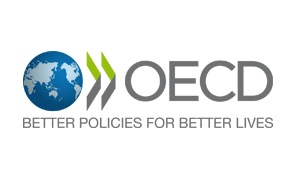

When the Organization for Economic Cooperation and Development (OECD) published its forecast for world economic growth in March, the COVID-19 pandemic had yet to make a significant impact on much of the world. The agency forecast that the world economy would shrink by 2.4% in 2020. In a June revision, the global gross domestic product (GDP) decline was raised to 6.0%.
In its just-published interim economic outlook for 2020, the OECD now projects the world economy will shrink by 4.5% this year, before recovering to grow by 5.0% in 2021. Real global GDP grew by 2.6% in 2019.
According to the OECD, the improved outlook follows from a relatively quick return of household spending on durable goods (such as appliances and cars) following the lockdowns of March and April. Offsetting more spending on goods, spending on services (restaurants, bars, haircutters, and the like) “has remained subdued.”
Government support schemes have softened the blow to household incomes due to the forced reduction in hours worked.
And that weakness has kept private investment and international trade at low levels, stalling a return to manufacturing production in many of the world’s export economies.
The OECD expects “sporadic local outbreaks” of COVID-19 to continue and assumes that a vaccine won’t be widely available until late next year. The outbreaks are not expected to result in national lockdowns, however.
Among the world’s G20 economies, only China is expected to post GDP growth in 2020. The OECD attributes the country’s projected 1.8% growth to the early outbreak of the pandemic in China, the country’s rapid control of the infections and quick policy support.
In the United States, real GDP is forecast to fall by 3.8% in 2020, compared with growth of 2.2% in 2019 and a June projection for a decline of 7.3%.
As a group, the G20 nations are expected to experience a 4.1% decline in GDP this year, compared to growth of 2.9% in 2019 and an earlier projection for GDP to shrink by 5.8% this year.
While underlining the uncertain nature of its global outlook, the OECD indicates that a resurgence in confidence along with a return to work could reduce consumers’ savings rate and could lift world GDP by around 2.5% in the third quarter of 2021. Business investment could rise to meet increasing demand, and the prospects for a sustained recovery would improve.
It is also possible, however, that a widespread second wave of infections could crush consumer confidence, causing consumers to raise their savings rate by 1% later this year and in the first quarter of next year. Businesses would remain closed and additional investment would be postponed. Should this scenario happen, global GDP could shrink by more than 3% by the third quarter of 2021.
Sponsored: Want to Retire Early? Start Here
Want retirement to come a few years earlier than you’d planned? Orare you ready to retire now, but want an extra set of eyes on your finances?
Now you can speak with up to 3 financial experts in your area for FREE. By simply clicking here you can begin to match with financial professionals who can help you build your plan to retire early. And the best part? The first conversation with them is free.
Click here to match with up to 3 financial pros who would be excited to help you make financial decisions.
Thank you for reading! Have some feedback for us?
Contact the 24/7 Wall St. editorial team.
 24/7 Wall St.
24/7 Wall St.


